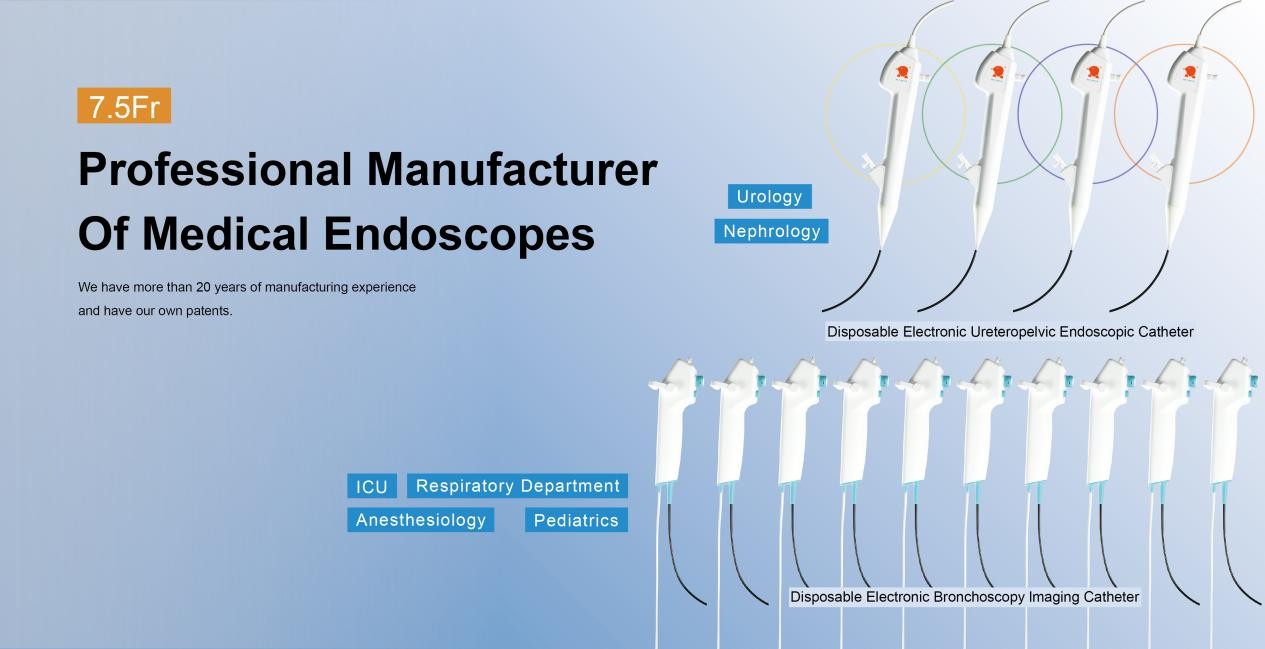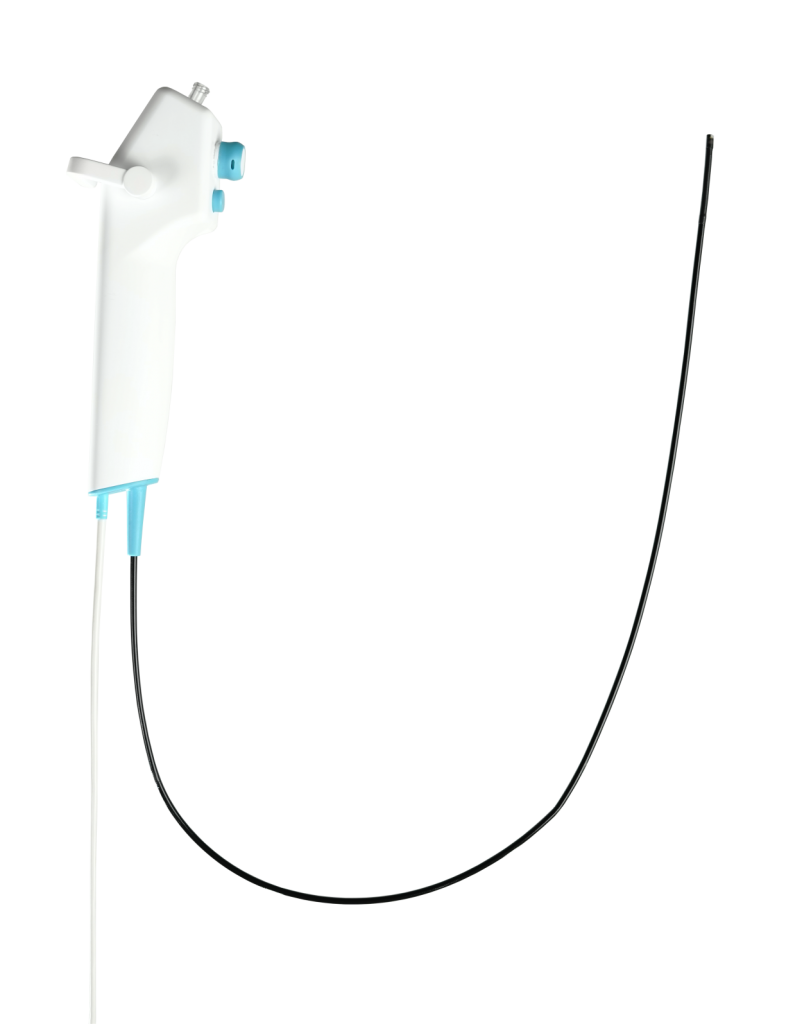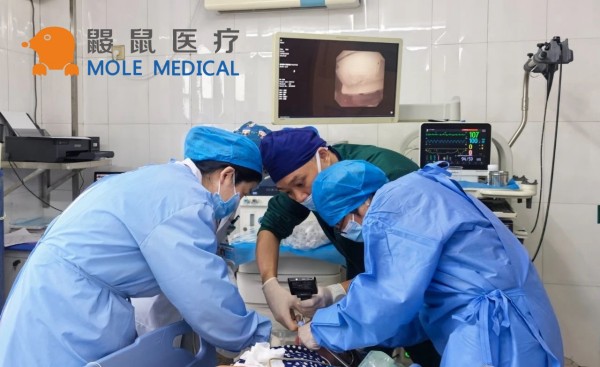Disposable Bronchoscope: Safe Respiratory Care
Dec 23, 2023
When it comes to respiratory care, safety is a top priority. Healthcare facilities around the world utilize various types of medical equipment to provide the best possible care to their patients. One device that is becoming increasingly popular is the disposable bronchoscope.
Disposable bronchoscopes are single-use bronchoscopy devices that offer numerous benefits for healthcare providers and patients. In this article, we will discuss the benefits of using disposable bronchoscopes in healthcare settings. We’ll explore how these devices help reduce the risk of infections in respiratory care units and intensive care units. We’ll also look at why disposable bronchoscopes have become a cost-effective alternative to conventional bronchoscopes.
Understanding Disposable Bronchoscopes
Disposable bronchoscopes have emerged as a valuable tool for healthcare providers in the diagnosis and treatment of respiratory disorders. These devices are designed for single use, which minimizes the risk of cross-contamination and infection. They are an excellent alternative to reusable bronchoscopes that require reprocessing, which can be time-consuming and costly.
Disposable bronchoscopes are available in various sizes and designs to cater to different clinical needs. They are lightweight, flexible, and provide clear imaging, which makes them ideal for use in bronchoscopy procedures. With the rise of infectious diseases, disposable bronchoscopes have become a preferred choice for healthcare providers due to their potential to reduce the spread of infectious pathogens.
Single-use bronchoscopes also eliminate the need for pre-cleaning, handling, and transportation, which reduces the risk of damage or loss. These devices come pre-assembled, reducing the setup time, and saving valuable nursing time. Therefore, these devices are an excellent option for busy healthcare settings that require high efficiency and productivity levels.
Advantages of Using Disposable Bronchoscopes
One of the key benefits of using a disposable bronchoscopy scope is that it eliminates the need for reprocessing and sterilization, which can save significant amounts of time and resources. Sterilizing traditional bronchoscopes can take anywhere from 45 minutes to an hour, while the use of disposable bronchoscopes can cut down that time significantly, speeding up the respiratory care process.
In addition to the time and cost savings gained from avoiding reprocessing and sterilization, disposable bronchoscopes offer infection control benefits as well. By using a disposable bronchoscope, the risk of cross-contamination can be minimized, as the device is used once and then discarded. This is especially important in environments where infectious diseases are prevalent, such as in ICU and respiratory care units.
The use of disposable bronchoscopes also helps promote better workflow and operational efficiency in healthcare settings, as there is no need for the time-consuming and costly reprocessing and sterilization steps. Additionally, healthcare professionals can spend less time on maintenance, and more time providing safe, effective respiratory care to their patients.
Effective Infection Control with Disposable Bronchoscopes

Disposable bronchoscopes play a crucial role in infection control, especially in high-risk medical settings such as ICU and respiratory care units. These devices are designed to be single-use, minimizing the risk of contamination and cross-infection.
The use of disposable flexible bronchoscopes significantly lowers the transmission of pathogens as it eliminates the need for reprocessing, sterilization, and associated risks. It ensures patient safety and improves clinical workflows.
Medical professionals recommend using disposable bronchoscopes for infection control and avoiding reusing devices. These devices are made of high-quality materials, ensuring maximum safety and hygiene.
In summary, disposable bronchoscopes provide a highly effective solution for infection control in healthcare settings. It is essential to use a disposable bronchoscope for infection control and ensure patient safety.
Cost-Effectiveness of Disposable Bronchoscopes
When it comes to managing costs in healthcare, every efficient measure counts. Disposable bronchoscopes offer cost-effectiveness by eliminating the need for costly reprocessing and sterilization procedures. As a result, the healthcare facility saves time and resources that can be better utilized elsewhere.
Furthermore, disposable bronchoscopes optimize workflow and improve operational efficiency. By offering a single-use bronchoscopy device, disposable bronchoscopy equipment removes the need for additional staff and equipment for reprocessing tasks.
Investing in cost-effective disposable bronchoscopes not only saves healthcare facilities money but also contributes to effective respiratory care. Healthcare workers can focus on providing effective care without worrying about the risk of infections caused by inadequate sterilization.
With technology advancements and increasing affordability, it may be practical for a healthcare facility to switch to disposable bronchoscopes.
Choosing the Right Disposable Bronchoscope
When it comes to choosing the right disposable bronchoscope, there are several factors to consider depending on the specific clinical needs.
One of the critical aspects to keep in mind is device flexibility. Opting for a flexible device ensures that the scope can navigate tight spaces without compromising imaging quality or device functionality. Additionally, choosing a device with high-quality imaging capabilities is essential. This will ensure the bronchoscopist sees a clear view of the airways, enabling them to make accurate diagnoses and treatment plans.
Another important factor to consider is the device’s ease of use. Opting for a device that is easy to maneuver can significantly reduce procedural time and improve operational efficiency. Devices with user-friendly interfaces, ergonomic designs, and intuitive controls can ensure the bronchoscopist has better control during the procedure.
Considering the compatibility of the bronchoscope with other respiratory care equipment is also vital. Devices that can readily fit into existing workflows and respiratory care systems can ensure streamlined procedures and optimize operational efficiency.
By choosing the right disposable bronchoscope, healthcare providers can ensure patient safety, optimal clinical outcomes, and operational efficiency.
Conclusion
In conclusion, using disposable bronchoscopes is crucial for effective infection control and safe respiratory care in healthcare settings.
These single-use devices offer numerous benefits, including reducing the risk of cross-contamination and saving time and resources by eliminating the need for reprocessing and sterilization.
Disposable bronchoscopes are particularly useful in high-risk settings such as ICU and respiratory care units, where minimizing the transmission of pathogens is essential for patient safety.
Additionally, disposable bronchoscopes can lead to potential cost savings by optimizing workflow and improving operational efficiency.
When choosing the right disposable bronchoscope for specific clinical needs, healthcare providers should consider factors such as device flexibility, imaging quality, and compatibility with other respiratory care equipment.
In summary, disposable bronchoscopes play a vital role in infection control and cost-effective respiratory care. By adopting these devices, healthcare providers can provide safer and more efficient care for their patients.
Categories
Latest Articles

Disposable Nephroscopes: Redefining Safety & Efficiency in Urology
Introduction The shift towards minimally invasive urological surgery has found a pivotal ally: the disposable nephroscope. As traditional reusable scopes grapple with persistent biofilm contamination risks and soaring sterilization costs, the global medical community is rapidly adopting single-use solutions. This article analyzes the clinical value, technological evolution, and dynamic innovation landscape driving this transformative shift. ... Read more

Disposable Video Laryngoscope Blades: The Ultimate Solution for Preventing Cross-Contamination
In the operating room, as the cold light of a video laryngoscope illuminates a patient’s airway, an age-old medical challenge is being redefined: How can life-saving instruments avoid becoming vectors of infection? Jiangsu MoleMedical drives an innovative safety revolution—replacing reusable devices with single-use, sterile laryngoscope blades that create a pure barrier for critical airways. Traditional video ... Read more
-2.jpg)
FDA & CE Approved Video Laryngoscope: What Makes It Stand Out?
Introduction In high-pressure emergencies and precision-driven operating rooms, video laryngoscopy is revolutionizing airway management. Mole Medical’s FDA and CE-certified technology replaces tactile-dependent “blind intubation” with real-time visual navigation – enhancing safety, accuracy, and clinical outcomes worldwide. Why Certification Matters Mole Medical’s dual certifications validate its global compliance and performance: FDA Clearance: Rigorous validation of safety/efficacy ... Read more

Mole Medical Showcases Advanced Endoscopy Solutions at CMEF Autumn 2025, Driving Global Partnerships
Guangzhou, China – September 26-29, 2025 – The 92nd China International Medical Equipment Fair (CMEF Autumn) concluded successfully on September 29th at the Canton Fair Complex in Guangzhou. Mole Medical Technology Co., Ltd. (Mole Medical) made a significant impact at the event, drawing global medical professionals and partners to its booth (Hall 2.1, Stand Q24) ... Read more

How to Use Disposable Ureteroscopes Safely and Efficiently
In the field of urology, the application of disposable electronic ureteral-kidney pelvis endoscopy catheters is leading the technological innovation in minimally invasive surgeries. According to the 2024 multi-center research data from China’s urology department, among the over 5,000 surgeries included, the patient group using disposable catheters performed significantly better in key indicators such as operation ... Read more



